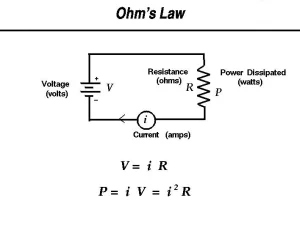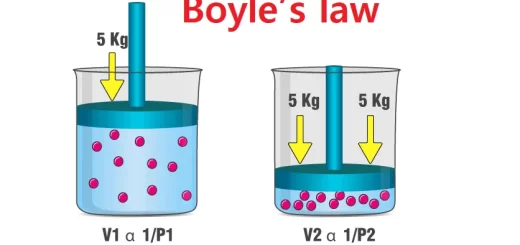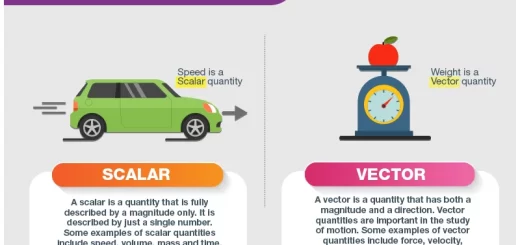Electric resistance, Relation between Current intensity and Potential difference (Ohm’s law)
The voltmeter is connected across the two ends of a conductor to measure the potential difference across the two terminals of the conductor. The voltmeter is connected across the two poles of a battery to measure the electromotive force of the battery. The rheostat is used in the electric circuit to control the electric current intensity passing through the circuit and the potential difference in the different parts of the circuit.
Electric resistance (The resistor)
Cars face bumps when they pass on the way. similarly, The electric current faces an obstruction (resistance) when it passes through a conductor which affects its intensity, The electric resistance is the opposition that the electric current faces during its passing through a conductor, The apparatus used in measuring the electric resistance is the “Ohmmeter” The measuring unit of the electric resistance is the “Ohm”.
Types of electric resistance
- The constant (fixed) resistance.
- The variable resistance (Sliding rheostat).
The variable resistance (Sliding rheostat)
Its structure:
- A metallic wire coil of high resistance, that is coiled around a cylinder made of an insulating substance as porcelain, and its two terminals are fixed by two connecting nails (A) and (B).
- A copper bar, which is fixed by a connecting nail (C) from which the current is out.
- A thin flexible copper sheet (slider), that moves on the copper bar and has a sliding contact with the metallic wire coil, and it can be moved along the metallic wire coil.
Its connection to the circuit: That is done through the two connecting nails (A) and (C). We can use the sliding rheostat as a fixed (constant) resistance, if its connection to the electric circuit through the two connecting nails (A) and (B).
Its importance: It is used to control the electric current intensity flowing through the circuit and the potential difference in the different parts of the circuit.
Its scientific base: The resistance of a conductor (metallic wire coil) is directly proportional to its length.
- The resistance increases by increasing the length of the conductor (metallic wire coil).
- The resistance decreases by decreasing the length of the conductor (metallic wire coil).
Its idea of operation: We can control the value of the resistance by controlling the length of the metallic wire coil that enters the electric circuit as follows: By sliding the flexible copper sheet (slider) on the metallic wire coil, so the length of this metallic wire coil will change then the value of the resistance will change and thus the current intensity will change also.
- If we increase the length of the metallic wire coil, the resistance increases, and the current intensity decreases.
- If we decrease the length of the metallic wire coil, the resistance decreases, and the current intensity increases.
The variable resistance (Sliding rheostat) is the resistance that you can change its value in order to adjust the value of the current intensity and the potential difference in the different parts of the circuit.
Inside the fuel tank of a car, there is a pointer connected to a changeable resistance that controls the flow of the electric current in the car’s fuel scale. When the level of the fuel is low, an electric current flows in a circuit causing the deviation of the fuel pointer indicating that the car needs the fuel.
The rheostat controls the current intensity flowing through the electric circuit because if we increase the length of the wire, the resistance increases, and the current intensity decreases and vice versa.
Relation between Current intensity & Potential difference (Ohm’s law)
The German physicist George Simon Ohm discovered the quantitative properties of the electric current, also, he discovered a law in electricity that shows the relation between the electric current and the potential difference which is known as “Ohm’s law“.
The relation between current intensity and potential difference
Steps:
- Connect an electric circuit. consisting of a battery, a rheostat, a voltmeter (V), fixed resistance, an ammeter (A), and a key.
- Close the key, then determine the reading of the voltmeter (potential difference between the two terminals of the fixed resistance) and the reading of the ammeter (current intensity that passes through the fixed resistance).
- Change the length of the metallic wire coil by moving the flexible copper sheet (slider), then determine the reading of voltmeter and ammeter.
- Repeat the previous step several times by changing the variable resistance each time and record your reading in a table then represent it graphically
- Calculate the value of V/ I in each case.
Observation: The ratio = Potential difference (V)/ Current intensity (I) = Constant value
V ∝ l ∴ V = Constant x I
The constant value is given by the symbol (R) and it is equal to the value of the fixed resistance. V = R x I. So, the mathematical form of Ohm’s law is: R = V/ I
Conclusion: The electric current intensity passing through the constant (fixed) resistance is directly proportional to the potential difference between its terminals, which is known as Ohm’s law.
Ohm’s law: The electric current intensity passing through a conductor is directly proportional to the potential difference across it at a constant temperature.
The electric resistance of a conductor is the ratio between the potential difference across the two ends of a conductor (resistor) and the current intensity passing through it.
Electric resistance (R) = Potential difference (V)/ Current intensity (I)
The measuring unit of the resistance (R) is the “ohms”. The measuring unit of the potential difference (V) is the “volts”. The measuring unit of the current intensity (I) is the “amperes”.
1 Ohm = 1 Volt / 1 Ampere
What is meant by the resistance of a conductor = 25 ohms…?
This means that the ratio between the potential difference across the two ends of this conductor and the current intensity passing through it = 25 ohm.
The ohm is the resistance of a conductor which allows passing an electric current intensity of one ampere when the potential difference between its terminals is one volt. Ohm = Volt /Ampere.
The ampere: It is the current intensity passing through a conductor whose resistance is one ohm when the potential difference between its terminals is one volt. Ampere = Volt/ Ohm.
The volt: It is the potential difference across the two terminals of a conductor whose resistance is one ohm when the current intensity passing through it is one ampere. Volt = Ohm x Ampere.
What happens in the following cases…?
- Burning of the fixed resistance in an electric circuit (concerning: the reading of an ammeter connected to the circuit in series and that of a voltmeter connected to the battery in parallel). The reading of the ammeter = Zero, but the reading of the voltmeter is still as it is.
- Increasing the potential difference between the two terminals of a conductor to double its value, at constant temperature (concerning the electric current intensity). The electric current intensity will increase to double its value.
- Increasing the value of the electric resistance to double its value, at constant temperature (concerning the electric current intensity). The electric current intensity will decrease to half its value.
The potential difference (V) is directly proportional to the current intensity (I) at a constant temperature. i.e. By increasing the current intensity, the potential difference will increase and vice versa.
The current intensity (I) is inversely proportional to the resistance (R) at a constant potential difference. i.e. By increasing the resistance, the current intensity will decrease and vice versa.
If the electric current intensity passing through the same conductor increases, then the potential difference across its terminals increases because the electric current intensity passing through a conductor is directly proportional to the potential difference across it.
Problems
If an electric current of 0.2 ampere passes through an electric heater and the potential difference between its two ends is 220 volt, calculate the heater’s resistance.
Solution:
Resistance (R) = Potential difference (V)/Current intensity (I) = 220/0.2 = = 1100 ohm.
Calculate the quantity of charge that passes through a conductor, whose resistance equals 1000 ohm for 30 min., if the potential difference between its poles equals 220 volt.
Solution:
I = V/ R = 220/ 1000= 0.22 amp.
q = I × t = 0.22 x 1800 = 396 coulomb.
Calculate the amount of work needed to pass an electric charge 500 coulomb across a conductor with a resistance of 3 ohm and the electric current intensity passes through is 2 amp.
Solution:
V= R x I = 3 x 2 = 6 volt.
w = v x q = 6 x 500 = 3000 joule.
You can follow science online on YouTube from this link: Science online
You can download Science Online application on Google Play from this link: Science online Apps on Google Play
Types of electric current, Direct and Alternating electric current, Series and parallel connection
Properties of Electric current, Simple electric circuit, Current intensity and Potential difference
Electrical current, Potential difference, Electric resistance, and Ohm’s law
Resistance connection (series & parallel), Electric energy, and Electric power




